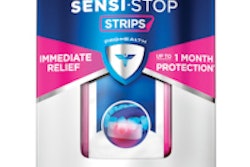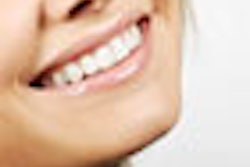
Dentin hypersensitivity is a common problem that dentists encounter, but just how common is it in general practices? Depending on its source, the answer varies wildly.
One study findings suggest that half of all patients suffer from hypersensitivity, a chronic condition causing intermittent, low-level pain (Journal of Oral Rehabilitation, September 1999, Vol. 26:9, pp. 710-714); another concluded that the rate is barely above 1% (Oral Health & Preventive Dentistry, 2007, Vol. 5:1, pp. 49-53).
"Uncertainty regarding the prevalence of dentin hypersensitivity can have significant consequences for patients and dental practitioners. With vague prevalence comes uncertainty in diagnosis, the appropriate time to treat, and how aggressive the treatment should be," noted the researchers of a new study in the Journal of the American Dental Association (March 2013, Vol. 144:3, pp. 288-296). A clearer answer could be immensely useful to dentists.
The nature of diagnosing dentin hypersensitivity is one of exclusion; it can also be elusive, the study authors noted. Against that backdrop, researchers tapped 37 general practices in the Northwest Practice-based Research Collaborative in Evidence-based Dentistry (PRECEDENT) network in a cross-sectional survey. The survey included 787 adult participants from PRECEDENT practices in Idaho, Montana, Oregon, Utah, and Washington.
While formatting their study, the researchers determined that they would need a sample size that included at least 30 general practices, with each one providing 20 or more adult participants. Half days for each practice to participate between September 2010 and May 2011 were chosen at random. During those days, patients were invited to participate until at least the minimum threshold was reached. Thirty-seven practices averaged 21 enrollees in the survey.
Patient questionnaire
To ascertain the presence of dentin hypersensitivity, the patients were asked, "Have you recently had any pain, sensitivity, or discomfort in your teeth or gums?" The choice of a nonspecific question was part of a conservative strategy of diagnosis, the researchers explained. If a positive response was given, the practitioners tried to exclude other possible causes with an examination. If hypersensitivity criterion was met, the practitioner performed an air blast test with five corresponding pain scales.
Of 787 participants, 315 (40%) responded that they had felt pain or sensitivity in their teeth or gingivae. Ultimately, 97 patients were confirmed to have dentin hypersensitivity in 342 teeth. Of those teeth, 32% were molars and 31% were premolars.
Patients (64%) tended to state that their symptoms began at least six months previous to the appointment, while 11% felt related pain all or most of the time. Fifty of those included in the dentin hypersensitivity group had utilized an at-home treatment (52%); the treatment did not work or worked for less than six weeks for 36 of them (70%). The results were only slightly better for the 21 participants who had in-office treatment: It had less than six weeks of or no effectiveness for 12 (57%) of them, while eight (38%) felt no pain.
In the end, the researchers found that 12% of their patient population had dentin hypersensitivity, a number near the low end of previously reported values for general practices.
"Patients with hypersensitivity are likely to be younger [than 65], to be female, and to have a high prevalence of gingival recession and at-home tooth whitening," they wrote.
Hypersensitivity was not as frequently linked to aggressive toothbrushing habits, noncarious cervical lesions, scaling and root planing, or obvious occlusal trauma, they added.
"Our results suggest that patients often seek relief from their dentin hypersensitivity pain, but that treatments are far from perfect in relieving their pain," the study authors concluded. "At-home and in-office treatments are more often than not ineffective in eliminating pain caused by this condition in the long term."



















